Journal of Water Resource and Protection
Vol. 2 No. 1 (2010) , Article ID: 1184 , 6 pages DOI:10.4236/jwarp.2010.21002
Groundwater Solution Techniques: Environmental Applications
1School of Science and Technology, Universiti Malaysia Sabah, Kota Kinabalu, Sabah, Malaysia.
2Department of Environmental Sciences, Universiti Putra Malaysia, Selangor, Malaysia
E-mail: smpraveena@gmail.com
Received September 29, 2009; revised October 29, 2009; accepted November 14, 2009
Keywords: Groundwater Models, Solution Techniques, Advantages, Limitations
ABSTRACT
Groundwater models provide a scientific tool for various groundwater studies which include groundwater flow, solute transport, heat transport and deformation. However, without a good understanding of a model, modeling studies are not well designed or the model does not represent the natural system which being modeled long term effects may results. Thus, this review has focused and reviewed the types of solution techniques in terms of advantages and limitations. The findings are vital to improve the model conceptualization and understanding of the uncertainty in model results. On the same hand, it acts as guide and reference to groundwater modeler, reduces the time spent in understanding the solution technique and complexity of groundwater models, as well as focus ways to address the groundwater problems and deliver modeling output more efficiently.
1. Introduction
According to [1], groundwater modeling covers different aspects of the system behavior. Groundwater modeling studies have four potential relevance processes which include groundwater flow, solute transport, heat transport and deformation. According [2,3], groundwater modeling has turn out to be a crucial tool in decision making and planning in environmental management. Decision making and planning processes in environmental management are associated with water resource allocation, complex development and requiring multidisciplinary information for evaluating their effects on a social, economic and environmental level [4]. Generally, most of the groundwater modeling studies are conducted using either deterministic models, based on precise description of cause-and-effect or stochastic models based on the probabilistic nature of a groundwater system [5,6]. The main components of groundwater modeling are selecting the natural system which the model is designed, creating the conceptual representing the natural system, models representing the controlling mechanism, solution of the model, calibration and validation of the model along with simulation [7,8].
There are enormous amount of groundwater models to study the cause and effect or the probabilistic nature of a groundwater system. It is an ad-vantage to classify them in groups based on criterias such as aquifer type, techniques used, type of aquifer simulated and the dimension of the problem [9]. [10] stated that the classification of groundwater models can be done based on model objectives, processed modeled, physical system characteristics modeled and mathematical approaches. According to International Ground Water Modeling Center (IGWMC), there are many various manners in groundwater models classifications (flow, media, transport, temperature, phases, chemical reaction, dispersion, thermodynamics, fractured rock, vapor transport, variable saturated, saturated) that a specific and systematic classification cannot be developed. A detailed explanation of these classifications can be found in [10].
Various solution techniques are a crucial component in groundwater models [6]. Solution techniques in groundwater modeling activities are to follow a multilevel approach. Multi-level approach involves data collection of groundwater flow and mass, contaminant transport and advection-dispersion equations, evaluation of the data and final decision to select the model. An understanding of various solution techniques is vital due to complexity in groundwater modeling and universal importance perspective. Era of numerous groundwater models development has been stimulated by high advance of computer technology and programming techniques. Yet the current numerous model development and groundwater complexity often leave those involve in groundwater studies spend a lot of time in understanding the solution techniques. This increased time resulted in less time spent in understanding the system. Thus, there are many gaps in our understanding of groundwater modeling which limits our capacity. Various groundwater models development have exposed with many reviews on the favors and disfavors of these models [6,8,11]. However, there are limited reviews on the solution techniques of these groundwater models although they are crucial components utilized in groundwater modeling. While a number of these solution techniques are focused on the types of models and applications in real world [11–14], a lack of quantitative information on the advantages and limitations of these tools impedes the use of these tools for real-world applications.
An understanding of various solution techniques is crucial due to complexity in groundwater modeling. This work was intended primarily as a guide and reference for the practitioner who is trying to simulate groundwater in their site of interest. This attempt is a way to lessen the time spent in understanding the solution technique and complexity of groundwater models, as well as focus ways to address the groundwater problems to render modeling output more effectively. The conceptual framework of the review was based on the types of solution techniques available in groundwater studies. An assessment of mutual understanding, advantages and limitations of all the solution techniques is applied to all kind of groundwater modeling studies and not limited to any particular purpose or equations. It is an attempt to reduce the time spent in understanding the solution technique and complexity of groundwater models and represent focus ways to address the groundwater problems and render modeling output more effectively.
2. Various Solution Techniques Assessment
According to [8], the term model has different meanings. Combinations of all model components are suitable for groundwater model. However, term model is also used in a part of various solution techniques. Thus, the term model will also be used in a part of solution technique in this review. Numerous sophisticated solution techniques or model are currently available to overweigh the accuracy of the groundwater system representation [15]. The groundwater solution techniques comprise from simple to complex [6]. According to [2] until early 1970s, physical and analog models were widely used as mathematical models solving groundwater problems. As groundwater modeling techniques boosted with extensive computer programmings, various solution techniques have been developed to solve the systems of mathematical equations. The simplest classification was done by [12] and [14], where the solution techniques are divided into two broad groups namely physical models and mathematical or numerical models. Solution techniques grouping done by [11] listed that groundwater models are divided into four broad groups which are porous media, analog, electric analog and digital models. Along with the advent of computers, groundwater modeling has focused on the numerical models expressing the groundwater flow and transport studies. However, these models (analytical, physical, analog, porous, empirical and mass balance) are still needed to investigate and validate new models. The requirements are to examine and analyze whether certain assumptions underlie the new models are valid. The conceptual framework of this review was based on the types of solution techniques listed by [8] as showed in Figure 1.
3. Solution Techniques Evaluations
It is very important to have strong understanding with a model in order to know the advantages and limitations of each solution techniques. Perspectives of advantages and limitations of the solution techniques were evaluated in this review.
3.1. Analytical Models
Analytical models are the rapid way to analyze physical characteristics and conceptual behavior of groundwater system compare to other models. This is because it uses an exact analytical solution for specific field applications. On the other hand, analytical models are only limited to steady and uniform groundwater problems involving

Figure 1. Types of groundwater models.
small parts of study area and bulky to transport problems. Table 1 presents other points of advantages and limitations of analytical models.
3.2. Porous Media Models
Porous media or bench-scale models belong to the group of hydraulic models which has been widely used in hydraulic engineering. Porous media models are suitable to use at any dimensionality, any type of groundwater flow and transport problems (variable saturated, heterogeneity, anisotropy, phreatic, steady, unsteady, advection, dispersion, sorption, decay and reactions). Information about porous media is presented in Table 2.
3.3. Analog Models
In terms of demonstration and education tools, analog models are still widely used for groundwater studies. Analog models (viscous fluid, membrane and lumped models) are not suitable for groundwater transport. The models have limited capability to involve with advection, dispersion, sorption, decay and reactions studies in
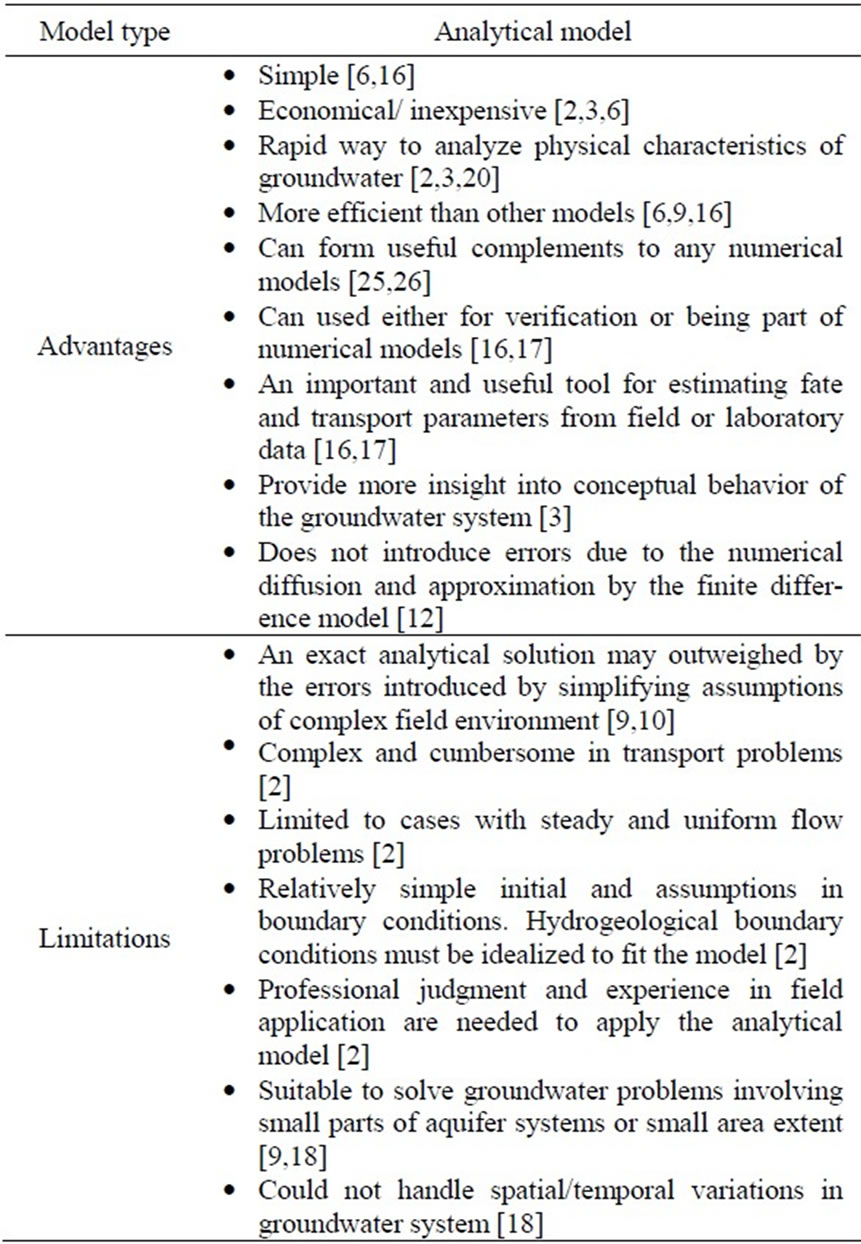
Table 1. Applicability of analytical models.
groundwater. The views on advantages and disadvantages of analog models are detailed in Table 3.
3.4. Empirical Models
Empirical models are useful to use when detailed site specific data are lacking or impractical situation to simulate fine-scale processes. Lack of understanding in the
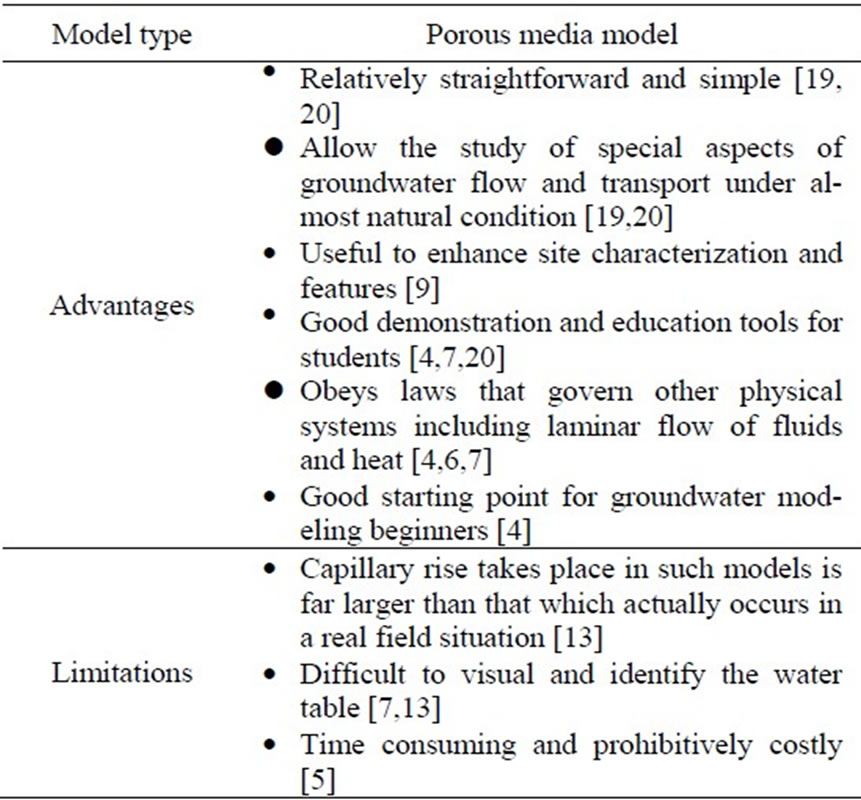
Table 2. Applicability of porous media models.
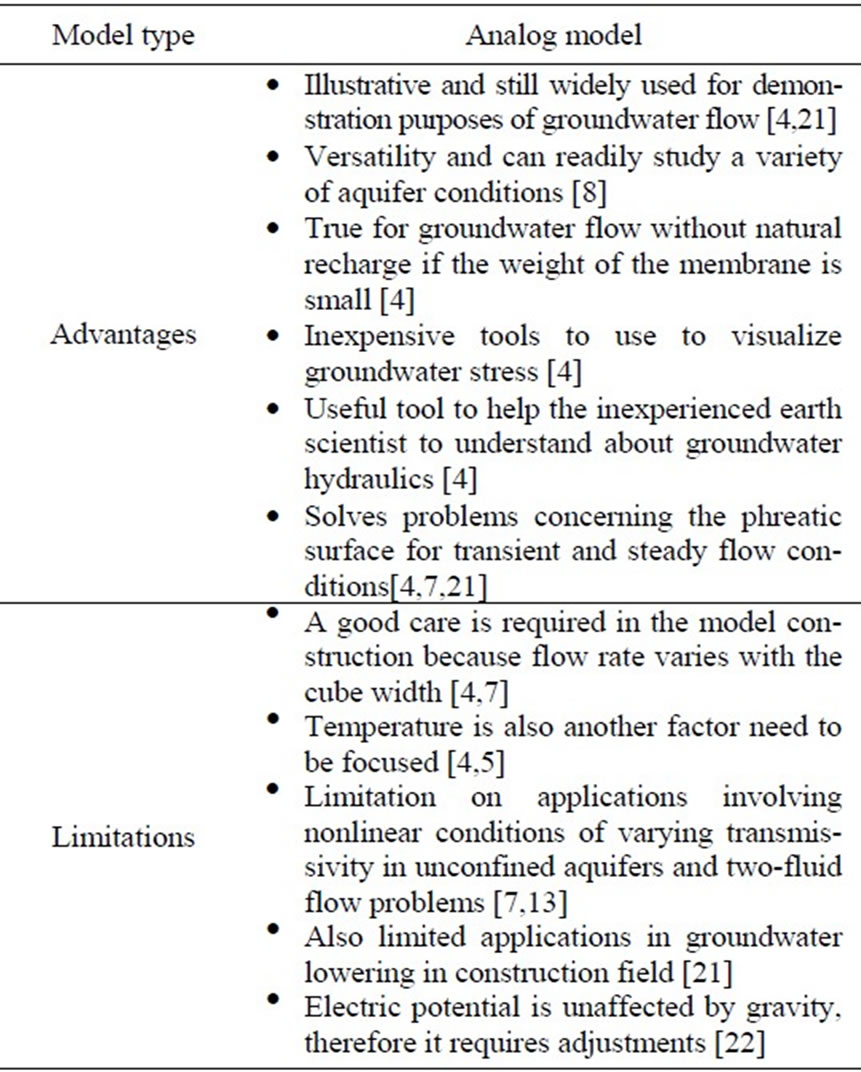
Table 3. Applicability of analog models.
processes involve in study area, these models can be misused or misunderstood as the models are easy to employ as well as lumping process together will mask the disadvantages of these models. Table 4 summarizes the information on empirical models.
3.5. Mass Balance Models
Mass balance model is also known as the black box or single-cell model. It is also a numerical model in its simplest form. In mass balance models, the averaging of an entire area is a crude approximation. Evaluation of field data is only involves in and out fluxes. Table 5 details the information of mass balance models.

Table 4. Applicability of empirical model.
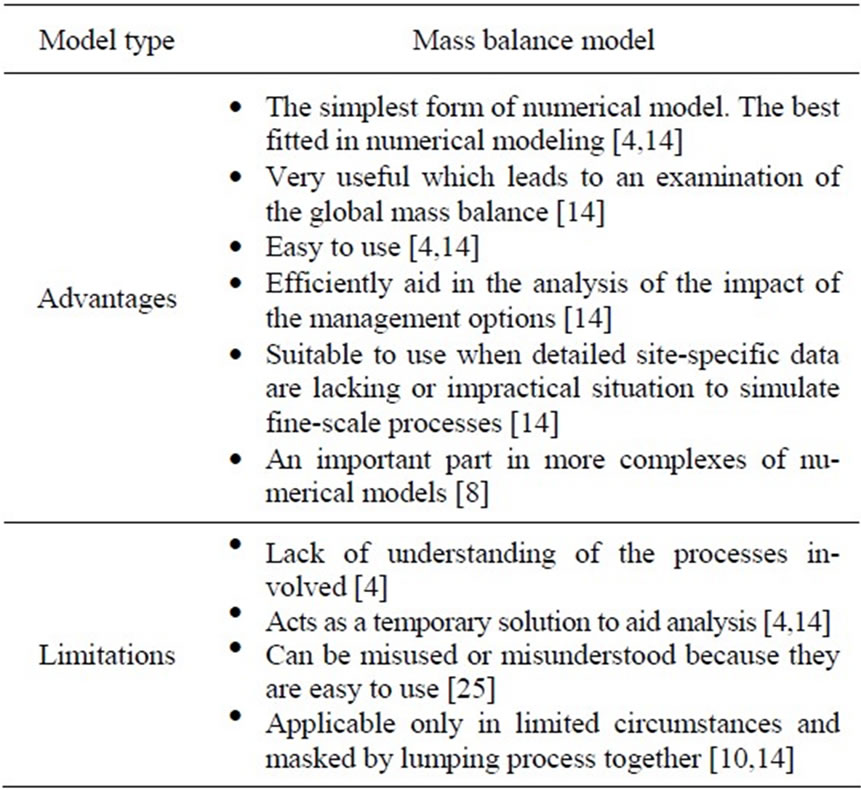
Table 5. Applicability of mass balance model.
3.6. Numerical Models
Among of the solution techniques assessment, numerical models were found to have more advantages over other solution techniques. They are such as it solves both simple and complex groundwater problems, capable to used almost of any type of groundwater system and impose no restrictions on the initial conditions, boundary types as well as characteristics of the groundwater. The most advantage in numerical models is that the models utilize the latest advances in computer technology without writing any computer codes. Numerical models which employ the latest computer technology also have limitations in terms of accuracy, errors and codes. Accuracy of numerical output mainly depends on the availability of soil hydraulic information, errors in numerical dispersion are hard to be identified as well as special codes are need for specific groundwater problem (Table 6).
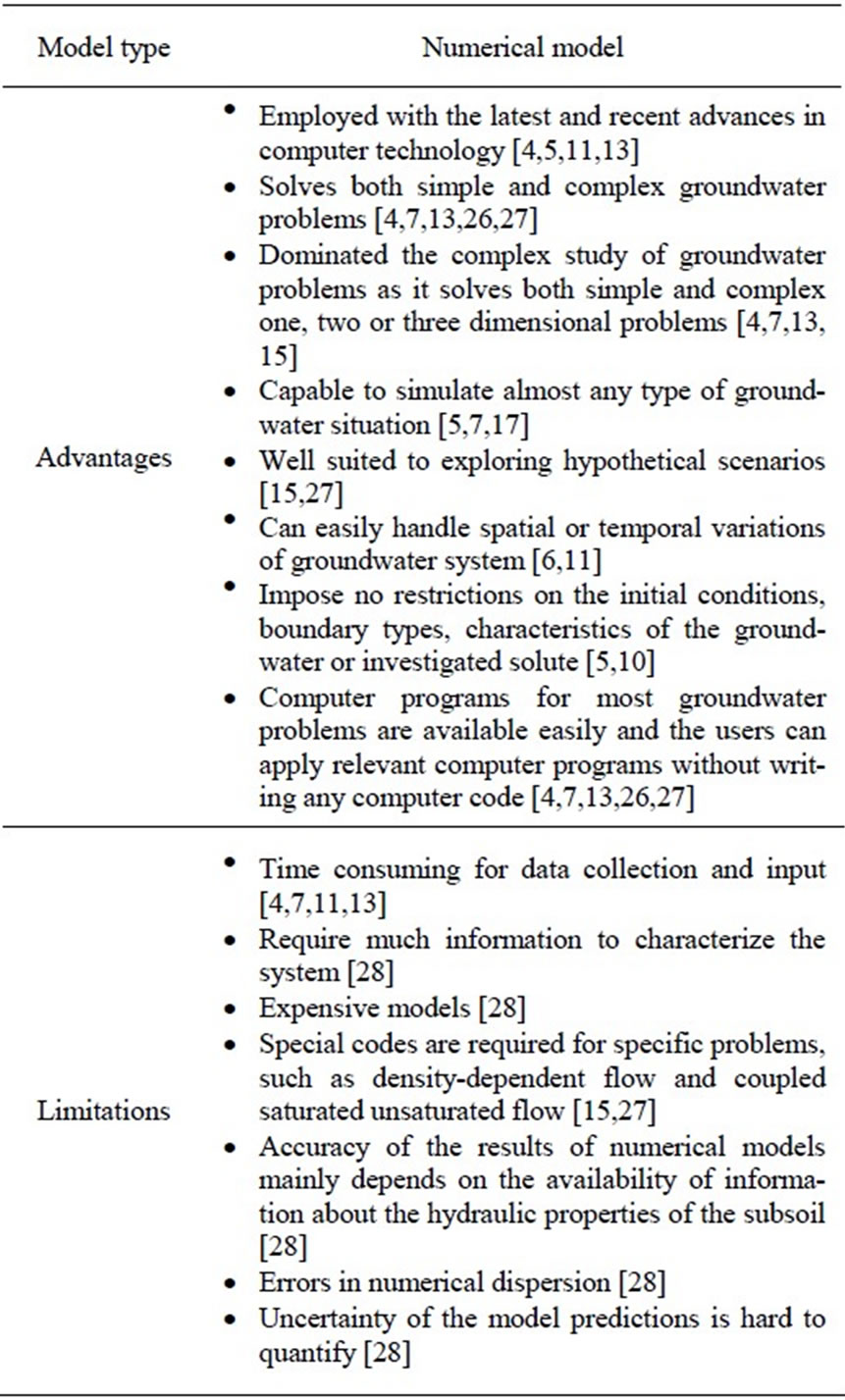
Table 6. Applicability of numerical model.
4. Conclusions
This review has focused and reviewed the types of solution techniques available in groundwater modeling studies. Assessment of six solution techniques namely analytical, porous media, analog, empirical, mass balance and numerical models was done to give a clear understanding of each solution techniques. Advantages and limitations of all the solution techniques were listed and analyzed. Analytical, porous media and mass balance models are simple and appropriate to use in groundwater modeling studies. In terms of demonstration and education tools, porous media and analog models are still widely used for groundwater studies. Empirical and mass balance models are useful to use when detailed site specific data are lacking or impractical situation to simulate fine-scale processes. The most benefit of numerical models is it utilizes the latest advances in computer technology without writing any computer codes as well as solves both simple and complex of any groundwater problems. On the other hand, limitations of analytical models are only limited to steady and uniform groundwater problem involving small parts of study area. Porous media and numerical models face time consuming for data collection and expensive as their constraints in the applications. Empirical and mass balance models face lack of understanding in the processes involve in study area and can be misused or misunderstood. In the view of analog models, they are not suitable for groundwater transport. Moreover, errors in numerical dispersion are hard to be identified as well as special codes are need for specific groundwater problems. As a final note, it is important to point out that a good understanding of various solution techniques act as guide and reference to groundwater modeler. Besides, it reduces the time spent in understanding the solution technique and complexity of groundwater models, as well as focus ways to address the groundwater problems and render modeling output more effectively.
5. Acknowledgement
The first author gratefully acknowledges the support by National Science Fellowship (NSF) Scholarship under sponsorship of Ministry of Science, Technology and Innovation (MOSTI), Malaysia for her doctoral study. Sincere appreciation is also extended to the reviewers for their helpful comments and suggestions which have improved the quality of this paper.
REFERENCES
- L. W. Canter, D. M. Fairchild, and R. C. Knox, “Ground water quality protection,” CRC Press, Boca Raton, Florida, 1988.
- J. Bear, M. S. Beljin, and R. R. Ross, “Fundamentals of groundwater modeling,” United States Environmental Protection Agency, 1992.
- P. K. M. van der Heijde, “Quality assurance in computer simulations of groundwater contamination,” Environmental Software, Vol. 2, pp. 19–25, 1987.
- E. Manoli, P. Katsiardi, G. Arampatzis, and D. Assimacopoulos, “Comprehensive Water Management Scenarios for Strategic Planning,” Global NEST Journal, Vol. 7, pp. 369–378, 2005.
- S. M. Praveena, M. H. Abdullah, A. Z. Aris, and L.C. Yik, “A brush up on seawater intrusion models,” in the Proceeding of Third Regional Symposium on Environment and Natural Resources, Kuala Lumpur, pp. 313–324, 2008.
- C. P. Kumar, “Pitfalls and sensitivities in groundwater modeling,” Civil Engineering, Vol. 84, pp. 116–120, 2003.
- V. S. Singh and C. P. Gupta, “Groundwater in a coral island,” Environmental Geology, Vol. 37, pp. 72–77, 1999.
- K. Spitz and J. Moreno, “A practical guide to groundwater and solute transport modeling,” John Wiley and Sons, New York, 1996.
- M. E. Thangarajan, “Resource evaluation, augmentation, contamination, restoration, modeling and management,” Capital Publishing Company, 2007.
- J. R. Boulding and J. S. Ginn, “Practical handbook of soil, vadose zone, and ground-water contamination: Assessment, prevention and remediation,” Lewis Publishers, Boca Raton, Florida, 2004.
- D. K. Todd, “Groundwater hydrology,” Second Edition. John Wiley & Sons, New York, 1980.
- M. P. Anderson and W. W. Woessner, “Applied groundwater modeling: Simulation of flow and advective transport,” Academic Press, Inc., San Diego, 2002.
- N. Krešić, “Hydrogeology and groundwater modeling,” CRC Press, Boca Raton, Florida, 2006.
- W. C. Walton, “Groundwater resource evaluation,” McGraw-Hill Education, 1976.
- K. McGillicuddy and T. Sovich, “Strategies for operation of orange county water district Talbert seawater intrusion barrier, California,” ASCE, New York, 1996.
- A. M. M. Elfeki, G. J. M. Uffink, and F. B. J. Barends, “Groundwater contaminant transport: Impact of heterogeneous characterization: A new view on dispersion,” Taylor & Francis, 1997.
- N. Emekli, N. Karahanoglu, H. Yazicigil, and V. Doyuran. “Numerical simulation of saltwater intrusion in a groundwater Basin,” Water Environment Research, Vol. 68, pp. 855–866, 1996.
- L. F. Konikow and T. E. Reilly, “Groundwater modeling,” In: The handbook of groundwater engineering, CRC Press, Boca Raton, Florida, 1995.
- L. Konikow and J. Mercer, “Groundwater flow and transport modelling,” Journal of Hydrology, Vol. 100, pp. 379–409, 1988.
- J. J. Fried, “Groundwater pollution: Theory, methodology, modelling, and practical rules,” Elsevier Scientific Publishing Company; Amsterdam-Oxford-New York, 1975.
- R. Bowen, “Groundwater,” Springer; London, 1986.
- J. Wainwright and M. Mulligan, “Environmental modeling: finding simplicity in complexity,” John Wiley and Sons, New York, 2004.
- K. R. Rushton, “Groundwater hydrology: Conceptual and computational models,” John Wiley & Sons, New York, 2003.
- Environmental Protection Agency, “Models and computers in ground-water investigations,” 1991, http://www. cepis.ops-oms.org/muwww/fulltext/repind46/models/models.html.
- V. Batu, “Applied flow and solute transport modeling in aquifers: fundamental principles and analytical and numerical methods,” CRC Press, Boca Raton, Florida, 2006.
- G. B. Maxey, W. Back, and D. A. Stephenson “Contemporary hydrogeology,” The George Burke Maxey memorial volume, Elsevier, 1979.
- M. Kasenow, “Determination of hydraulic conductivity from grain size analysis,” Water Resources Publication, 2002.
- E. Holzbecher, “Modelling density-driven flow in porous media,” Springer Publisher, Heidelberg, 1998.

